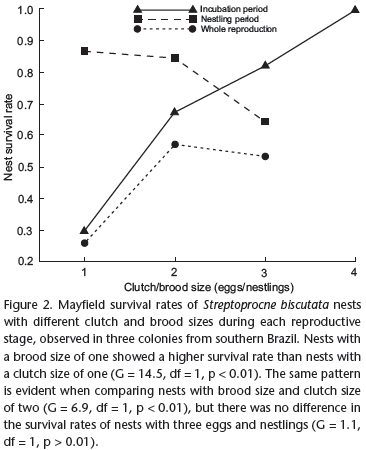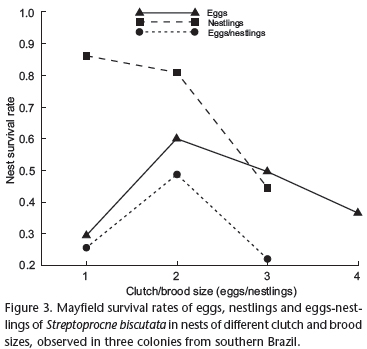The nesting success of three colonies of Streptoprocne biscutata (Sclater, 1866), and the influence of clutch and brood size on nesting success of species were studied. Overall, apparent nesting success was 58% and Mayfield nesting success was 53%. Nest survival during incubation (64%) was lower than during the nestling period (83%). During incubation, clutches were lost to rain, desertion, predation, egg ejection, egg damage, and egg disappearance. During the nestling period, losses occurred due to offspring disappearance, nestling death by starvation, predation and falling. During both incubation and nestling periods, predation was low, while egg ejections and nestling starvation were the main causes of nest failure. Nest survival during incubation was directly proportional to clutch size, while during the nestling period it was inversely proportional to the brood size. Apparently, there seemed to be an advantage to having more eggs during incubation. However, if all eggs were to hatch during unfavorable weather the nest success could be low. These results suggest that when the breeding pairs face adversity during incubation, they control the brood size by ejecting part of the clutch.
Breeding success; egg ejection; clutch reduction; Mayfield method





